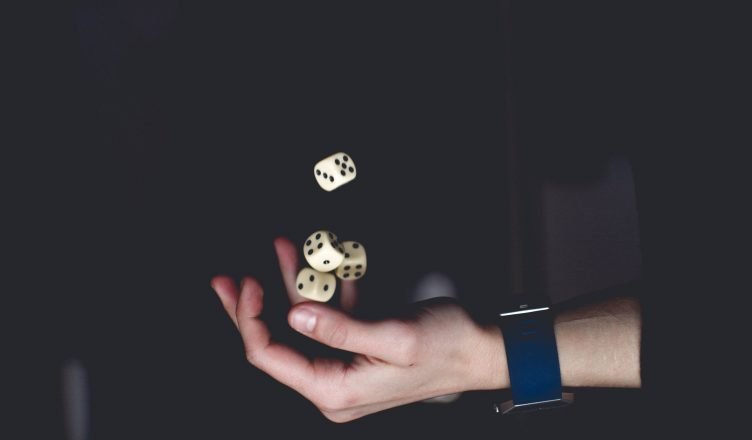We all want to have good fortune in our lives. When lady luck smiles at us, our journeys go smoothly without any bumps or hitches along the way. All problems seem to magically resolve themselves, as if they are trying to get out of our way. No matter on the Eastern or Western side of the world, numerous symbols or items traditionally expressing good luck have been around for centuries, or even millenniums. Below are top 10 items or symbols that people believe would bring them good fortune.
10. Tortoiseshell cat

A tortoiseshell is the name of a special type of fur color for a cat. Most cats are mono-color, which means that their fur only has 1 color, like a ginger cat or black cat. Tortoiseshell cat fur, on the other hand, has multiple colors intermingling at once, like the color of a tortoise’s shell. These special cats are affectionately nicknamed ‘Torties’.
Most tortoiseshell cats are female. Tomcats are extremely rare, at the rate of 1 in 3000 (0.00033%), and they often have health problems. Torties are not a breed, more of a color classification for a cat. There are no specific breeds of Tortie. Unlike Calico cats, which are also ‘multi-colored’ cats, tortoiseshell cats don’t have white on their coats.
Many people on both East and West side of the world have customary beliefs about Torties. The Irish and Scots believe that these cats bring good fortune, while Americans see them as cats that bring wealth. Japanese sailors, on the other hand, are convinced that Torties ward off storms and spirits while out at sea.
9. Cornicello (little horn)
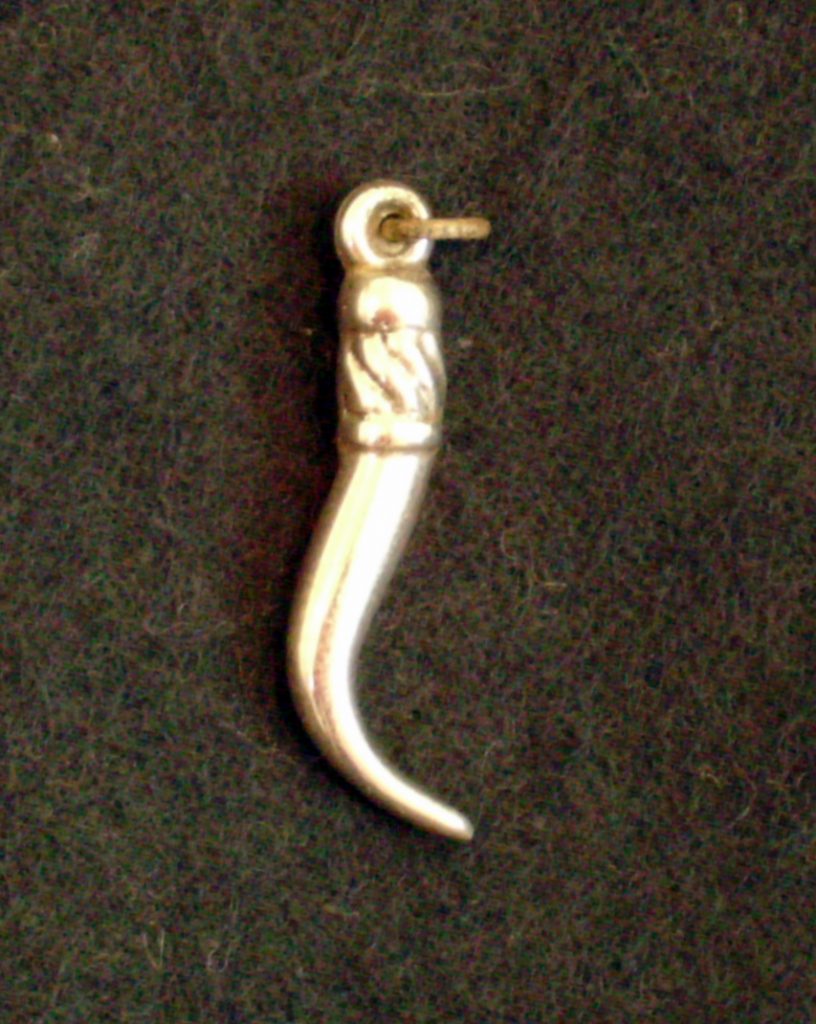
The Cornicello, or Italian horn, is a small horn that the Italians believe would bring good fortune. These horns resemble a twisted-looking chili pepper, with the sharp end pointing downwards. Different materials such as gold, silver, metal alloys, plastic or even animal bones have be used to create these lucky charms.
The horn is worn by believers around the neck to protect against the ‘Evil eye’. The Evil eye, or Malocchio, is a curse when someone looks at another with a feeling of jealousy. When someone gives you the Evil eye, it can bring misfortune due to malice from the other person. People believe that the Cornicello can ward off any ill effect resulting from the ‘dirty’ look.
The little horn is also seen as a symbol of abundance for women and vitality for men, and are extremely popular among Italians.
8. Wishbone
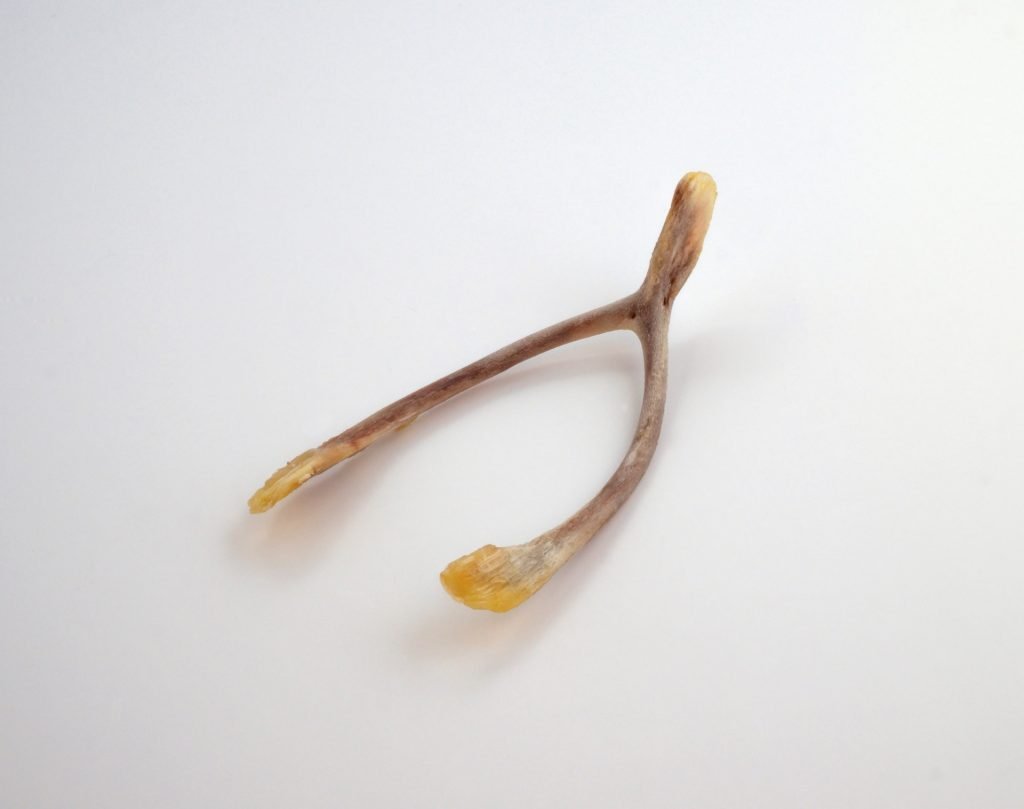
A wishbone is a V-shaped chest bone of a bird. It’s also known as a furcular, and its main function is to enable birds to fly. Believe it or not, the wishbone is regarded as a lucky charm for thousands of years, from 700BC.
Many people carry a wishbone around for good luck. However, it is believed that a wishbone has to be broken to release the good luck within. To do that, people leave the wishbone to dry in the sun, where the bone becomes fragile and easy to crack. After drying for a few days, the person hoping for luck would pull the wishbone apart, breaking it, freeing the luck hidden within the wishbone.
This ritual of breaking a wishbone is also probably where the term ‘catch a break’ comes from.
7. Rabbit’s foot

A rabbit’s foot is exactly what it sounds like: a hind leg from a dead bunny.
It is actually unknown where this superstition came from, but there is speculation that it originated from the beliefs in North American ancient magic known as hoodoo. They believed that a rabbit which had its left back feet lobbed off on days where the luck are the lowest would produce a lucky rabbit feet. The rabbit also had to be mutilated in a graveyard. The feet is then left to dry and preserved, the fur on the leg dyed, and the feet becoming a trinket for good fortune.
Most rabbit foot sold on the market today is made of faux leather or plastic, since it is considered unacceptable to chop off real rabbits limbs for making good luck charms today.
6. Number 8

The number 8 is considered to be an auspicious number in Asian culture.
In Chinese language, the number 8 (‘ba’) has similar pronunciation to the word for gaining monetary wealth (‘fa’), so the Chinese associate this number as lucky for good fortune to accumulate wealth. Many Chinese are actually willing to pay premium sums for things that have this golden number in them, such as apartment numbers, car plate numbers or even mobile phone numbers.
The Japanese, on the other hand, believe that the number 8 is lucky for an entirely different reason. The kanji character of the number eight (八) extends outwards, signifying longevity.
5. Number 7

Ever heard of the term Lucky 7, and wonder why all slot machines’ jackpot picture is 777?
The number 7 has traditionally been considered good luck, especially in the Western side of the world. Many religious beliefs and natural phenomenon have been associated with this number. For example, there are seven colors of the rainbow, 7 days in a week, 7 deadly sins, 7 continents on Earth, 7 wonders of the world, and much more.
In all major religions, the number 7 is also significant. In the Christian bible, God rested on the 7th day. Muslims believe that there are 7 heavens, and circle around the Kaaba 7 times in Mecca, Islam’s most scared place. A new Buddha takes 7 steps when he first achieves nirvana and the title of ‘Buddha’, and there are 7 heavens and hells in Hinduism.
With so many seemingly randomly things with the number 7 coming together, it’s no wonder people consider number 7 to be lucky.
4. Chimney sweeper

A chimney sweep is one of the jobs that was created in the industrial revolution, when people started to own houses with wide chimneys. The chimneys would accumulate soot that eventually block air flow, and creating the possibility the possibility that the entire house can be set ablaze. A chimney sweep’s job would be to clear out all the soot piled up there and ensure residents’ safety.
Being a chimney sweeper was dangerous and lowly paid job, and many children involved in this trade were orphans. These young kids, often as young as five, were taught the art of climbing and sweeping chimneys by a master sweep. As a result, they were often black from head to toe from all the soot that had covered their skin. As lower class people, chimney sweeps did not have the luxury of baths like the middle and upper class did in the nineteenth century, so they rarely cleaned up their ragged look. Chimney sweeps had also known to be burnt to death or stuck in a chimney if they were not careful.
There are several versions of stories regarding why touching a chimney sweep, especially their hands, are considered auspicious. One version is that King George III was rescued by one and issued a royal decree declaring them lucky. Another version is that a sweep about to fall to his death was rescued by a lady passerby. It was love at first sight for them and they got married. These legends led people to believe that getting skin contact with a sweep is good luck.
3. Fish

In both Chinese and Japanese culture, fish symbolizes good luck and wealth. As a result of these beliefs, many are proud owners of pet fish.
The Chinese believe that fish is auspicious as the word fish has the same tonal sound as the word abundance ‘yu’. There is a Chinese greeting during the lunar new year which means ‘May you have abundance every year’, and Chinese character ‘fish’ is sometimes substituted as the Chinese word ‘abundance’ as a tongue-in cheek, but have since been adopted and widely used by many Chinese as a greeting.
The Japanese, on the other hand, believe a specific type of fish, the Koi, to be auspicious. A Japanese legend states that a Koi which manages to swim upwards the waterfall in the Yellow River would become a dragon, similar to Magikarp evolves into Gyarados in Pokemon.(link here) As a symbol of determination, courage and prosperity, the Koi has found its way into the hearts of many Japanese.
2. Dreamcatcher
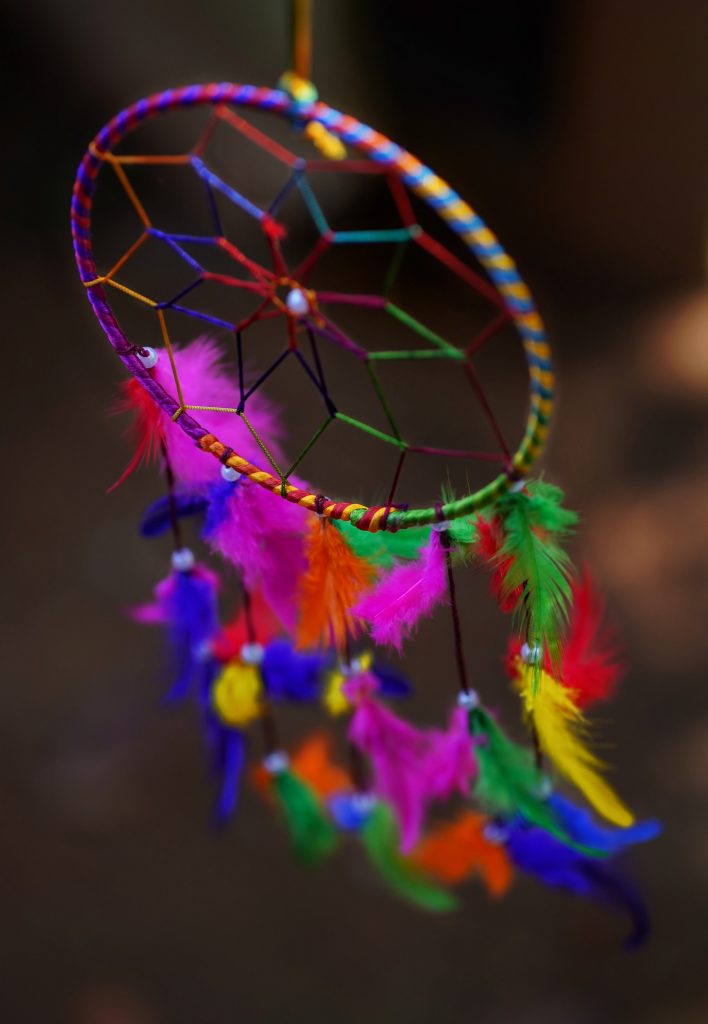
A dreamcatcher is an iconic Native American item. Dreamcatchers have become tourist souvenir over the years, gradually eroding their original purpose in people’s minds, but many consider them as a good luck charm.
The original purpose of a dreamcatcher is to get rid of nightmares. Native Americans believed that the strands of string on the dreamcatcher, resembling webs, are used to ‘capture’ bad dreams. Sweet dreams are filtered through the web to reach the sleeping person. When day breaks, light from the sun dissipate the bad dreams trapped in the web, and the person protected by the dreamcatcher awakens, feeling rejuvenated and at peace.
Dreamcatcher designs have been changed over the years to include bells that swing in the wind, which is definitely not something you want beside your bed! Despite these modernization of the dreamcatcher, this iconic charm is still well regarded as a symbol of good fortune for those who possess one.
1. Four-leaf clover
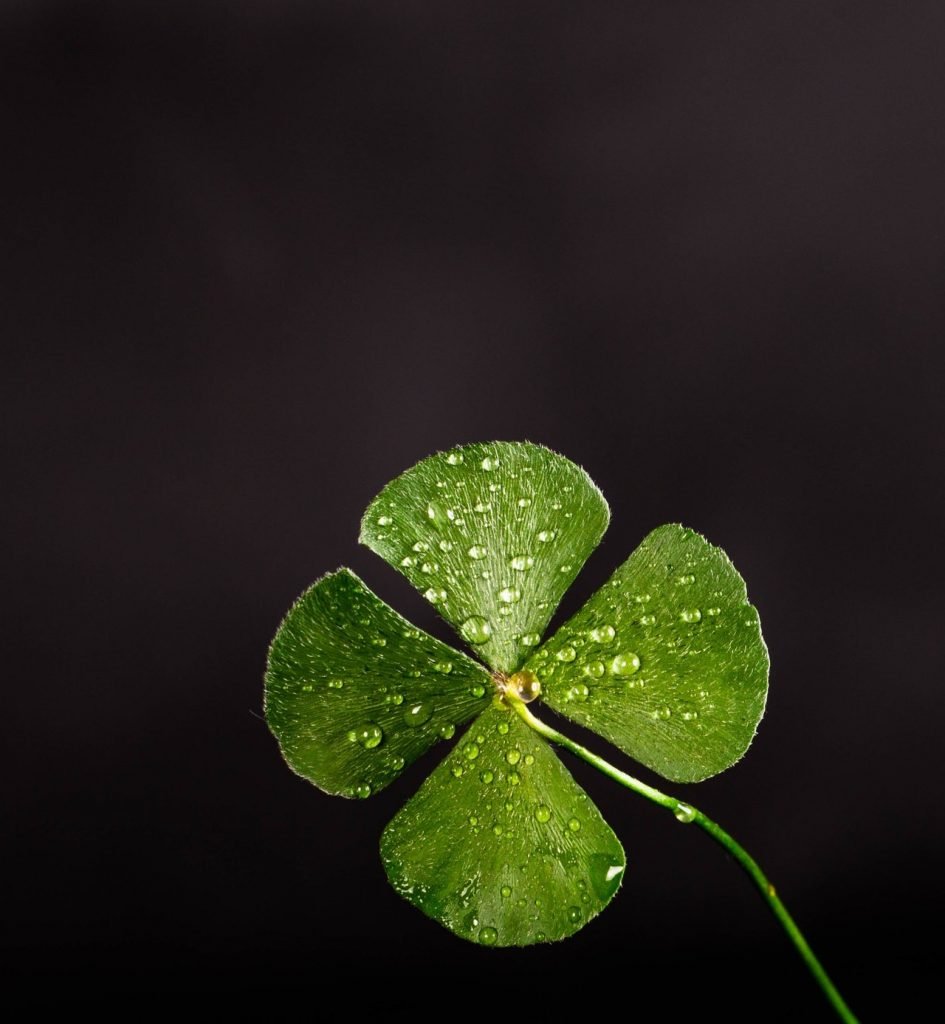
Four-leaf clovers are internationally recognized icons of good luck. Although clovers are common plants, four-leaved ones are actually quite rate, with a rate of 1 in 10,000 (0.0001) clovers!
Clovers are also a symbol of the Irish people. According to traditional beliefs, each of the four-leaves of the clover represents faith, hope, love and luck respectively. There is also a legend that having a four-leaf clover allows humans to see fairies, adding on to the perceived magical ability of the clover.
Many enthusiasts around the world collect these clovers. They collect and preserve them, carefully placing them into boxes or giving them away to spread the good fortune around. Some others have even took to planting their own clovers to grow their good luck plants. In fact, the largest number of leaves found on a single clover is 56!
If you are having a bad day, stumbling on a four-leaf clover might just turn your frown into a smile!
Bonus. Maneki-neko
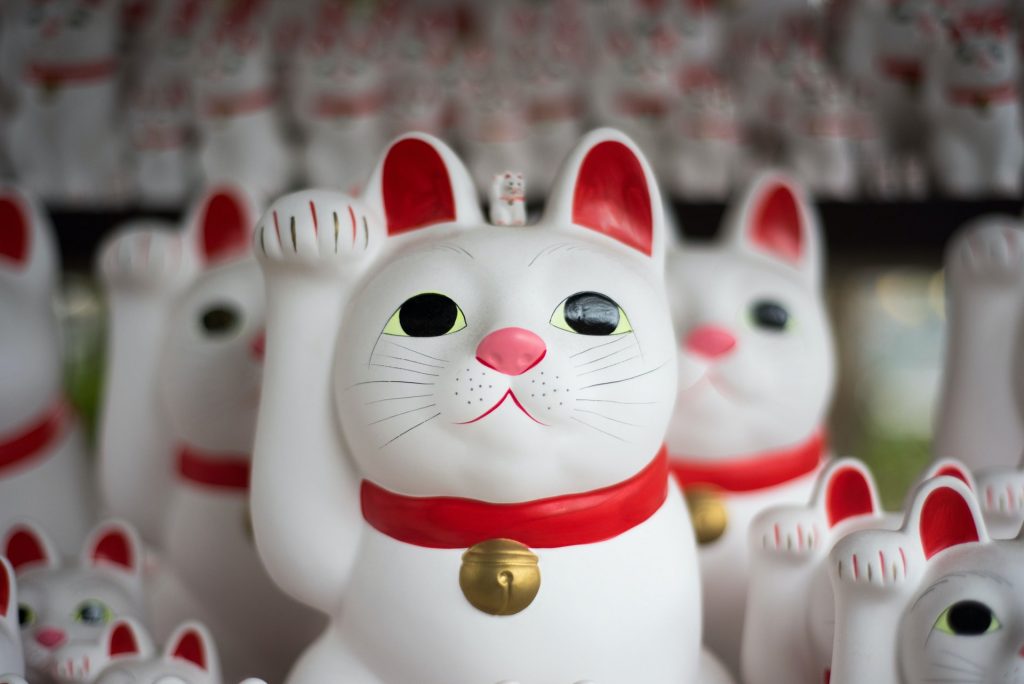
Maneki-neko, or beckoning cats, are those cats you see in Asian stores that sit on top of the cashier box. Waving an arm at each customer as they make their way to pay for items, these cats seemed to be asking the customer to move over to them. These cats can be solar or battery operated, and are usually made of plastic or porcelain.
Despite popular beliefs that the beckoning cat originated from China, they actually hail from Japan. There are several stories regarding this cat’s origin. One of these stories goes like this: There was a heavy storm, and a cat saved its owner from a falling tree that would have crushed him if he had not gone over to his cat as it waved at him. Another story involved an innkeeper feeding a hungry stray cat, who repaid his kindness by waving its paws at passersby to entice them into his inn.
Today, Maneki-nekos are well regarded as a symbol of prosperity and good fortune for its owner, especially so for those who are running the cashier or their own businesses. Even if you don’t have a store, putting a lucky cat near your money pouch might just entice some cash to flow there!
Do you personally believe in or use any of these good luck charms? Leave your comments below!

